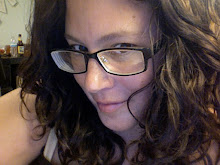
"Art, like Nature, has her monsters, things of bestial shape and with hideous voices." –Oscar Wilde
The recent flap over at
jaxcal has got me thinking. Not about monster art per se, but about the grotesque/monstrous/malformed in a historical context.
Art historically, the term grotesque originally referred to the various decorative arabesques, interlaced garlands, and fantastic animal figures discovered in ancient Roman ruins in the 15th century. Later, the word was used to describe the forms often found on/in Gothic churches, and in contemporary parlance, the word is understood to mean the strange, fantastic, ugly or bizarre.
The Oxford English Dictionary describes grotesque as: (n) 1561, a. A kind of decorative painting or sculpture, consisting of representations of portions of human and animal forms, fantastically combined and interwoven with foliage and flowers. b. A work of art in this style. Chiefly pl., figures or designs in grotesque; in popular language, figures or designs characterized by comic distortion or exaggeration. The Italian form grottesco (pl. grotteschi) is sometimes used.
Monster as: (n) 1375, Originally: a mythical creature which is part animal and part human, or combines elements of two or more animal forms, and is frequently of great size and ferocious appearance. Later, more generally: any imaginary creature that is large, ugly, and frightening. The centaur, sphinx, and minotaur are examples of ‘monsters’ encountered by various mythical heroes; the griffin, wyvern, etc., are later heraldic forms.
The use of fantastical forms has a long and storied history in art. Hieronymus Bosch famously used twisted and disfigured forms to illustrate the innate evil in man. Odilon Redon used the monstrous and grotesque in his work to “place us [the viewer], as does music, in the ambiguous realm of the undetermined.” While closer to home, the artist John Casey (a.k.a. Bunnywax) says “…the physical malformations my characters have are the result of biomorphology. My theory is if one could distort one's body based on one's emotion or psychological state, what would that look like? What if the body formed strange huge club-like limbs or a floating head on it's own, without the control of the owner? Whether the figure is in control of that morphing, I'm not one hundred percent sure. I think it varies from work to work.”
And when the word “monster” is applied to his work: “I'm actually okay with the word if it is used in the complex sense of the concept as in Mary Shelley's Frankenstein, a being who is ostracized from society but a being who also has complex emotions and a desire to belong, to be loved. The more simplistic idea of the monster being evil is what I reject. There is no such thing as pure evil.”
However, I might float the opinion that this contemporary work is a cultural reaction: these artists might be attempting to synthesize the increasingly extreme and horror-filled world we live in with the creation of literal monsters?
Then there is our shared (mostly) Judeo-Christian heritage that has a huge history of monsters, from the Biblical Leviathan to the Devil himself (based, we now know, on the Roman/Greek god Pan). Whether or not these devils, deities, and monsters were based purely in the imagination, or on objects discovered by ancient people (like dinosaur’s bones), they are ingrained in our psyche, even if they only make a fleeting appearance as the thing that goes bump in the night.
Are these a cultural manifestation a la Carl Jung? Shared terror that gets denuded with a “cute,” perspective? I.e. if we draw them, then they cannot harm us?
Or is it something simpler? A use of humor, whimsy, and imagination to create visual contradictions that are at once sympathetic and provocative. A break from the maxim to create art about “real” issues like poverty, war, and famine. Categories so broad as to be rendered virtually meaningless by non-specificity.















